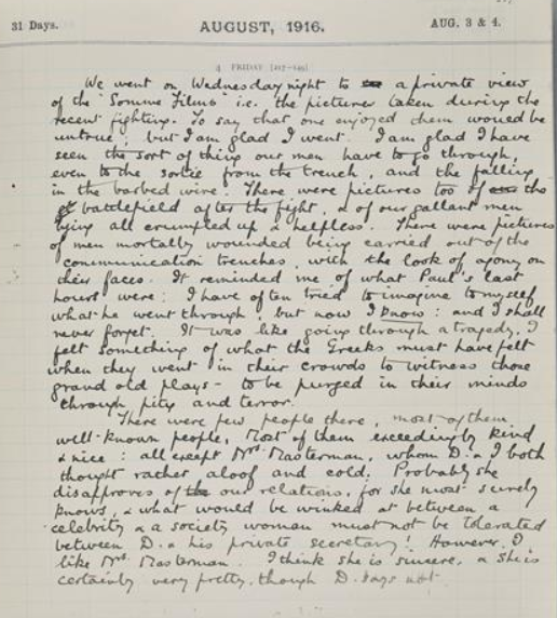Source: Kenneth Baily, ‘”Gerald Cock Presents” – Review of Television Programmes’, The Era, 14 October 1936, p. 1
Text: Experimental programmes from the Television Station made by the B.B.C. during the past week have cast some illuminating light on things to come when the television service starts properly on November 2.
As watched on a Baird televisor in my own home, the programmes have, more than anything else, proved that real entertainment value is derived from television only when television technique is scrupulously adhered to and when subjects exclusively suited to the new medium are chosen.
This may sound obvious, but, in its planning and in these experiments, the B.B.C. is already drawing on other spheres of entertainment for television material. I believe that a few more weeks’ experience will show that television is an indifferent foster-mother for the conventional arts, and that it must conceive its own dream-children.
The unsuccessful programmes have been those where stage pieces and films, it seemed, just placed before the television cameras and transmitted. The first of “The Two Bouquets,” for instance, was not a success, and when “The Picture Page,” a pure television production, was shown later, that stage excerpt, in comparison, assumed the unmistakable guise of failure.
And films are made on too grand a scale to fit in to a screen 2 inches by 9 in the corner of the parlour. The sound track heard in proportion in a cinema, is too pronounced and obvious in comparison with the little picture by the fireside.
Half an hour of Henry Hall and the BBC Dance Orchestra proved without much doubt that Henry’s gentle and smiling personality is going to be a television attraction. Dan Donovan made an outstanding television début too. Dance band vocalists, hugging the mike in permanent close-up, will tend to bore viewers; but Dan’s mannerisms, and just the way he sings his numbers, are full of that which is going to be at a premium for television soloists – personality.
On the other hand, a fervent lady admirer of George Elrick – as he is heard – was disappointed by his television appearance.
Because of its personalities, Henry Hall’s band should avert the difficulties facing most televising bands – the viewer’s easy assumption that all bands look the same, and lack movement and “picture points”.
In a different way Younkman’s band, which I also saw, succeeded by filling the picture with agility and plenty of “gipsy” abandon.
Leonard Henry knew what he was about when he took his dummy gas mask to the television studio. Even his patter will need visual additions in television, and the mask gave them to it.
The real achievement to date, however, was “The Picture Page.” Its success came of its having been devised and produced exclusively for television. It would be impossible anywhere else – even in film – and that is as it should be with all material for televising.
Its very beginning was a hit, scored by specialised ingenuity. A boy bugler from off the Warspite was seen blowing a fanfare as he stood before a Union Jack, filling the whole screen; then he dissolved into the title of the programme in the form of a magazine page. Credit titles followed as the pages were turned.
Then came the only mistake. As link between the items in the programme, Joan Miller sits as a telephone operator before a switch board, plugging-in viewers to the items they are supposed to be calling for.
Instead of leaving the “pages” for a direct shot of Miss Miller, another “page” was turned, bringing into view a full-page photograph of her at the switchboard.
The direct shot followed this, and Miss Miller was supposed to be in the identical pose of her photograph. The effect was disjointed, and betrayed quite obviously which was photograph and which Miss Miller in the flesh.
Among the personalities seen were Fight-Lieutenant Swain, altitude record breaker of the RAF; Prince Ras Monolulu (I Gotta Horse); Mrs. Flora Drummond, suffragette leader; a Siamese cat; and Diana Sheridan, the photographer’s model.
“The Picture Page” is really “In Town To-Night” gone visible: but, though it inherits from its sound sister the successful basic idea, as it was devised for televising it was literally an eye-opener for this viewer, who, expecting but experimental programmes, was amazed when such a polished production bewitched his screen.
Comments: Kenneth Baily was a radio journalist, editor in the 1950s of the Television Annual and author of an early history of the medium, Here’s Television (1950). His brother Leslie was a well-known radio producer. The BBC Television Service launched officially on 2 November 1936, but was preceded by test broadcasts, with the first broadcast of the magazine programme Picture Page taking place on 8 October 1936. The Two Bouquets was an operetta by Eleanor and Herbert Farjeon. Gerald Cock was the BBC’s first Director of Television. Picturegoing normally does not reproduce reviews, but because of the domestic details, the description of what may have been an afternoon’s (?) programming, and the very early use of the word ‘viewer’ in a television context, an exception has been made.
